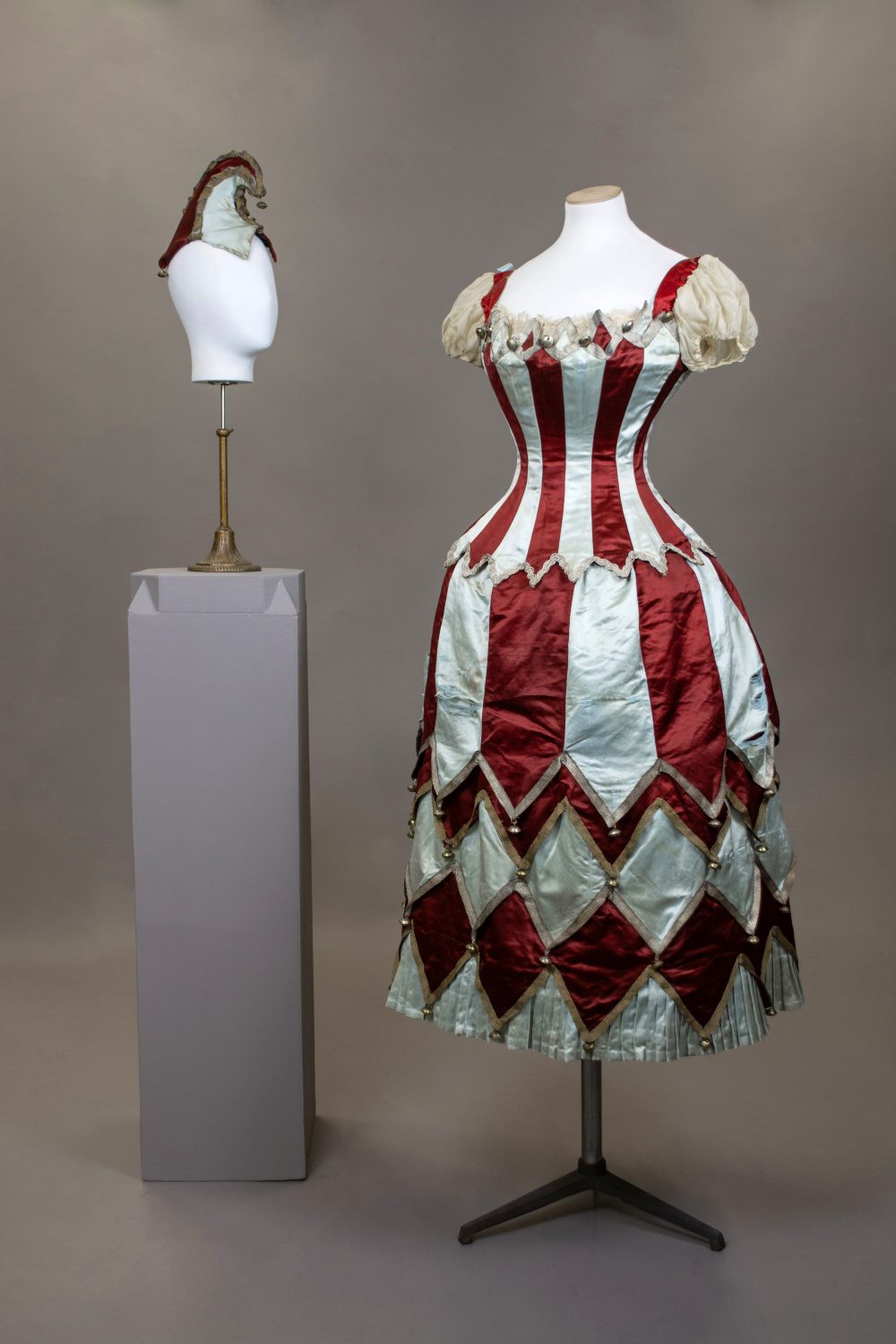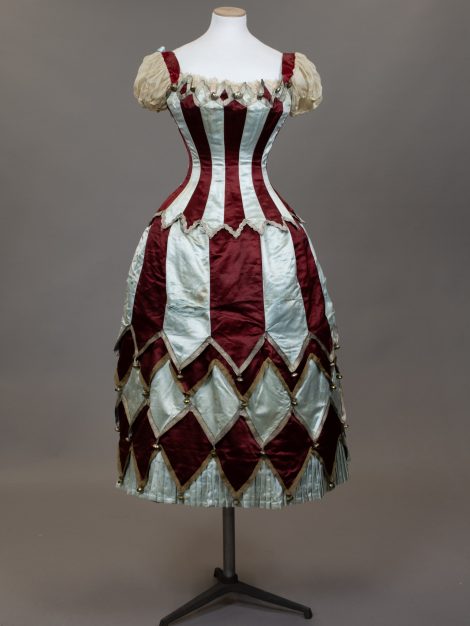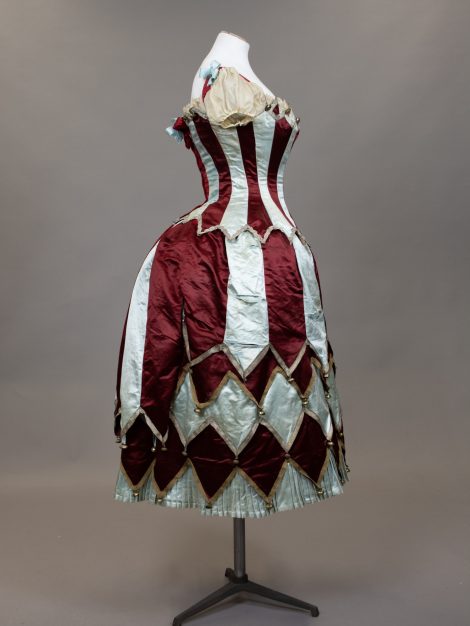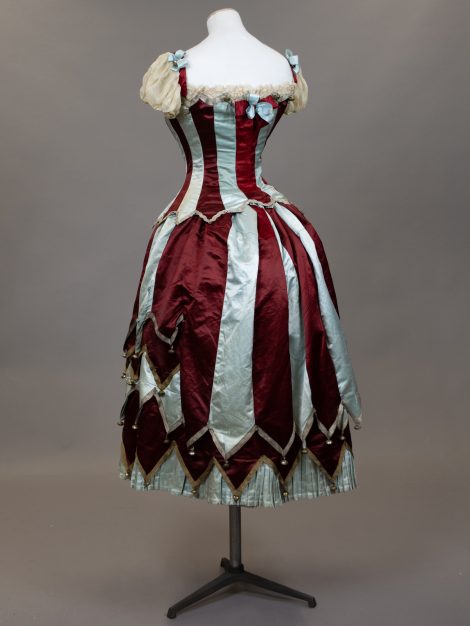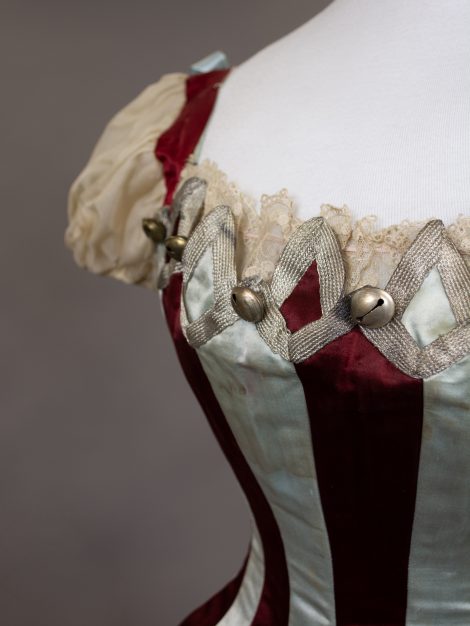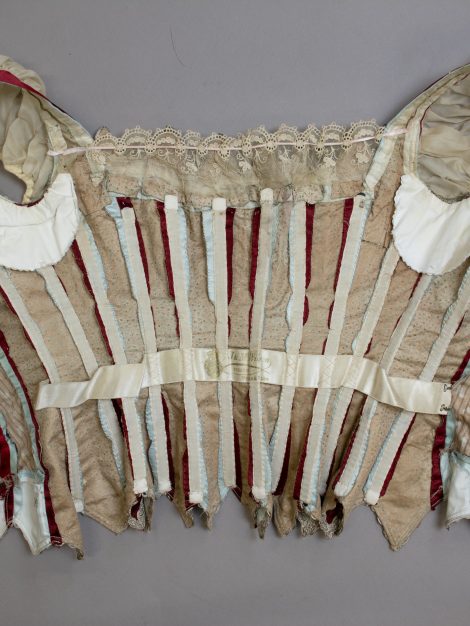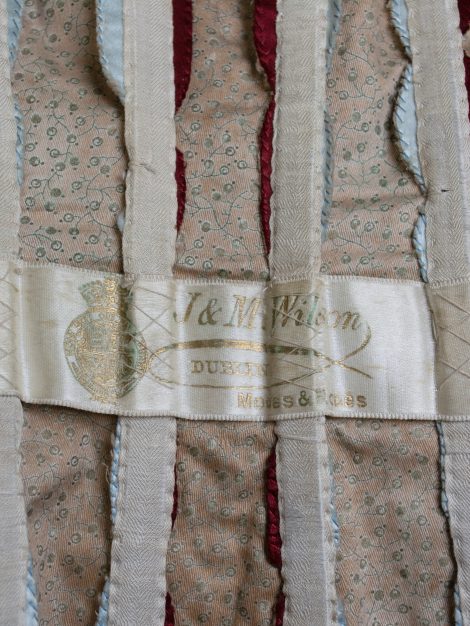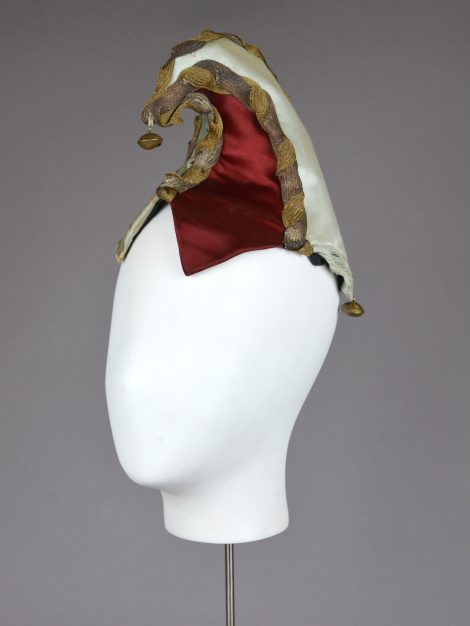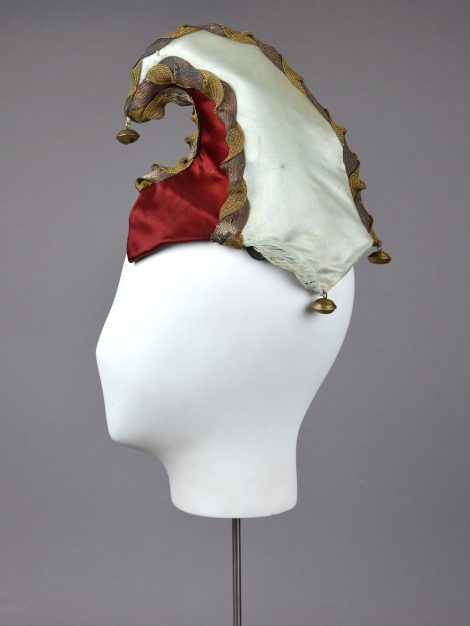Label: ‘J. & M. Wilson / Dublin / Modes & Robes’
With its contrasting stripes, bell-trim and fool’s cap, this costume draws inspiration from the archetype of the medieval court fool. Late 19th Century fashion plates caption similar costumes quite interchangeably as ‘Folly’, ‘Princess Carnival’, ‘Pierrette’ or ‘Harlequinette’. The outfit is presumably based the ‘Folly’ illustration from Ardern Holt’s 1882 edition of Fancy Dresses Described: What to wear at fancy balls , a popular publication by Debenham & Freebody. The design is almost identical to this costume, apart from small differences in its sleeves and skirt.
Misses Jane and M. Wilson, the suppliers of this outfit, ran their Dublin dressmaking business on fashionable Grafton Street from around 1875 into the early 20th Century. They announced their travels to Paris and London every season, presenting themselves as purveyors of high fashion from these epicentres. It is possible that they brought Ardern Holt’s book from a trip to London. The Wilsons catered to a high society clientèle. A list of selected customers published in the Irish Times on 13 April 1885 features the likes of Lady Grogan, the Misses Warburton and Hon. Katherine Dillon, who also populate guest lists of Royal receptions at Dublin Castle. The high quality of this costume confirms that it would have been commissioned by an affluent lady with the means, connections, and leisure to attended fancy dress balls requiring this level of luxury and craftmanship.
The different life circumstances of the Wilsons’ employees who would have constructed this outfit also feature in the Irish press: In 1880, several articles follow a court case accusing the Misses Wilson of violating the Factories and Workshop Act. As reported by the Dublin Evening Standard of 8 June 1880, an inspector had visited twice and had found staff working overtime on both occasions. The first time, he ‘took a good deal of time and trouble to explain the Act to her [Miss Wilson]. The girls worked from nine a.m. to ten p.m. on that day.’. It appears as if excessive working hours were the norm before his inspection, even if the employees claimed to have asked for in lieu overtime themselves the second time. Vacancies published by the Wilsons give further insight into the structure of their workroom: labour was divided between departments specialising in different garment types. In the case of this costume, a ‘Body Maker’, a ‘Skirt Maker’ and a milliner would presumably have made the individual pieces. All these positions were advertised separately, a vacancy for a ‘Skirt Foreman’ suggests a clear hierarchy within the departments. One article about the court case mentions that the Wilsons employed thirty workers, giving us an idea of the scale of their business.
